Some books are flashes in the pan, read for entertainment and then left on a bus seat for the next lucky person to pick up and enjoy, forgotten by most after their season has passed. Others stick around, are read and re-read, are taught and discussed. sometimes due to great artistry, sometimes due to luck, and sometimes because they manage to recognize and capture some element of the culture of the time.
In the moment, you often can’t tell which books are which. The Great Gatsby wasn’t a bestseller upon its release, but we now see it as emblematic of a certain American sensibility in the 1920s. Of course, hindsight can also distort the senses; the canon looms and obscures. Still, over the next weeks, we’ll be publishing a list a day, each one attempting to define a discrete decade, starting with the 1900s (as you’ve no doubt guessed by now) and counting down until we get to the (nearly complete) 2010s.
Though the books on these lists need not be American in origin, I am looking for books that evoke some aspect of American life, actual or intellectual, in each decade—a global lens would require a much longer list. And of course, varied and complex as it is, there’s no list that could truly define American life over ten or any number of years, so I do not make any claim on exhaustiveness. I’ve simply selected books that, if read together, would give a fair picture of the landscape of literary culture for that decade—both as it was and as it is remembered. Finally, two process notes: I’ve limited myself to one book for author over the entire 12-part list, so you may see certain works skipped over in favor of others, even if both are important (for instance, I ignored Dubliners in the 1910s so I could include Ulysses in the 1920s), and in the case of translated work, I’ll be using the date of the English translation, for obvious reasons.
For our final installment, below you’ll find 10 books that have defined the 2010s so far (fear not—we are almost through). For this one, I will add the caveat that it’s impossible to evaluate a moment while you’re in it, and without the benefit of hindsight, it’s difficult to make claims about which books will last and which will dissolve in our memories. I could have made another list of 10 that would have been equally convincing (this may be true of all of these lists), but I have used my best judgement from where I sit today. (Head here for the 1910s, 20s, 30s, 40s, 50s, 60s, 70s, 80s, 90s, and 00s).
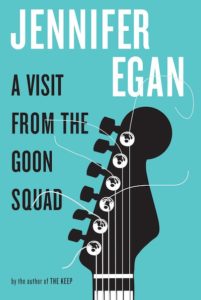
Jennifer Egan, A Visit From the Goon Squad (2010)
Egan was already established when she published this book, but it’s the one that made her a household name. It won the National Book Critics Circle Award, in a year that—gasp—a Jonathan Franzen novel was in the running. The LA Times ran a picture of Franzen with their coverage of the NBCC award, which led to some serious mocking. It also won the Pulitzer, by the way, and the board described it as “an inventive investigation of growing up and growing old in the digital age, displaying a big-hearted curiosity about cultural change at warp speed.”

Téa Obreht, The Tiger’s Wife (2011)
This novel was a full-on sensation when it was published in 2011—both surprising, considering it’s a myth-infused story set in an unnamed Balkan region that is basically Yugoslavia, which Americans do not know about, and not surprising, considering the strength of the writing and the fact that Obreht was only 25 (in 2011 she was the youngest-ever winner of the UK’s Orange Prize) and boy, do Americans love a wunderkind. Especially a wunderkind whose wunderbook does not actually disappoint. By the way, did you know it was the first book ever sold by her agent, and the second book ever acquired by her editor? Wunder-city.
But that’s not really what makes it such an enduring novel. “What makes The Tiger’s Wife so special is that it has nothing to do with the typical immigrant memoir or the thinly disguised autobiographical novel,” Charles Simic wrote in the New York Review of Books.
One comes to realize that The Tiger’s Wife, with its many different stories, is a novel of immense complexity. First, it is an extended elegy for the narrator’s beloved grandfather, a man with a life story entangled in the fate of the country once known as Yugoslavia, who was able to maintain his compassion and decency in time of ethnic hatred and violence; it is also a lament for all those anonymous men, women, and children made homeless in these cruel and senseless wars. Like the Arabian Nights, it is a book about storytelling and its power to enchant as it wards off death and postpones the inevitable.
The book was a massive success, becoming a New York Times bestseller and a National Book Award finalist, and landing Obreht on the New Yorker‘s coveted 20 under 40 list.
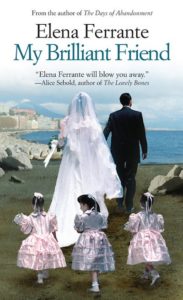
Elena Ferrante, My Brilliant Friend (first English translation, 2012)
As Alexandra Alter put it in 2016, “enthusiasm for Elena Ferrante’s novels runs so high that it has been described in epidemiological terms, making the phenomenon sound almost like an infectious disease.” Yes, Ferrante Fever. It’s a thing. It’s a movie. And it’s only going to become more widespread once the HBO adaptation lands in November. The series has sold over two million copies in North America and millions more worldwide, and is the figurehead of a growing trend of female friendships in literature—giving writers license to make (and sell) more, and giving the rest of us a reminder to celebrate them. Some critics also put her at the leading edge of the autofiction trend, though Ferrante herself would not describe her works that way. Either way, there’s no denying that these were the books everyone was reading in the 2010s.
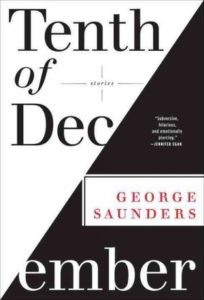
George Saunders, Tenth of December (2013)
There was some argument in the Literary Hub office about which George Saunders book to put into this series. But while people in the literary world had known about Saunders for years, it was with Tenth of December that he really became a household name—thanks, in large part, to the New York Times Magazine proclaiming, on the cover of their first issue of 2013: “George Saunders Has Written the Best Book You’ll Read This Year.” Not shocking then that everyone ran out and bought a copy, despite the fact that it was a short story collection full of very weird short stories—I remember the book being on backorder on Amazon and sold out in stores, and naturally it wound up being a bestseller. There’s also the matter of his influence, which is considerable—almost every writer who reads a Saunders story spends at least a little time figuring out how to ape some aspect of it. When he won the MacArthur Genius Grant in 2006, the jury described him “highly imaginative author [who] continues to influence a generation of young writers and brings to contemporary American fiction a sense of humor, pathos and literary style all his own.” Saunders is also, not for nothing, as fine a moral center as you are likely to find, if you are looking for an external moral center. I include this because I hope morality and kindness can still find their way toward defining this decade. I am not optimistic about this, but Saunders probably would be.
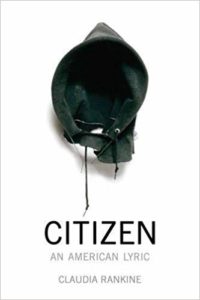
Claudia Rankine, Citizen: An American Lyric (2014)
In the category of books that both define a cultural moment and are absolutely essential to it, may I present . . . a book of poetry? In this decade? (Note that the Literary Hub editors and I have no incredulity at this, let me just assert.) As Holly Bass put it in 2014 in The New York Times, “in light of the national demonstrations over the Michael Brown and Eric Garner cases, it’s tempting to describe Citizen, Claudia Rankine’s latest volume of poetry, as “timely.”
Even the cover image of a floating hoodie, its sleeves and torso cut away, seems timely. Any American viewing it would immediately recall a certain black teenager who was shot and killed by a neighborhood watch volunteer in February 2012. But this work, by the artist David Hammons, was created in 1993—well before Trayvon Martin was even born.
And this seems to be part of Rankine’s conceit: What passes as news for some (white) readers is simply quotidian lived experience for (black) others.
The challenge of making racism relevant, or even evident, to those who do not bear the brunt of its ill effects is tricky. Rankine brilliantly pushes poetry’s forms to disarm readers and circumvent our carefully constructed defense mechanisms against the hint of possibly being racist ourselves.
It was a highly decorated bestseller, another feat for a book of poetry (even one that doubles as a book of criticism) and if you haven’t read it, you should.
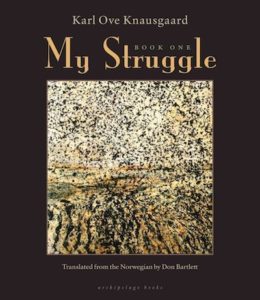
Karl Ove Knausgaard, My Struggle (first English translation, by Don Bartlett, 2014)
Another literary sensation—first in Norway, when the books were published there, and later in English-speaking countries, where the first book was published in 2014 and the last one just this year. “By 2012, the books had sold 458,000 copies [in Norway],” Hari Kunzru wrote in The Guardian, “a staggering figure in a country of 5 million people.
Knausgaard’s unflinching descriptions of his marriages, his father’s alcoholism, his second wife’s bipolar disorder and his conflicted feelings about fatherhood were profoundly shocking to the Lutheran sensibilities of a country that is less comfortable with public confessions than the Oprah-soaked anglophone world. Commentators obsessed over the new literary sensation. Was Knausgaard brave or shameless? Was it ethical to reveal so many other people’s private lives along with his own? He received hate mail, death threats. His uncle started legal action. one Swede took the extreme critical step of setting fire to the K section of a Malmö bookstore, telling police that he did it because Knausgaard was “the worst author in the world”. And what about the title—Min Kamp or My Struggle, a reference to Hitler’s notorious autobiography? The final book (yet to appear in English) contains a 400-page essay on the Nazis and ends with a discussion of the anti-immigrant mass murderer Anders Breivik. What face was this man revealing? What kind of gaze did he want his readers to meet?
The sensation was slightly less intense in the US, but Knausgaard was (and is) notorious enough to make it, thinly disguised, onto Younger, where he made out with Hillary Duff, and what could be more American than that? He is the figurehead of the ongoing and much discussed “autofiction” trend, and has inspired endless criticism and conversation and condemnation and accolades, and honestly, how else to choose a book that defined a decade than by picking the one we all had an opinion about?
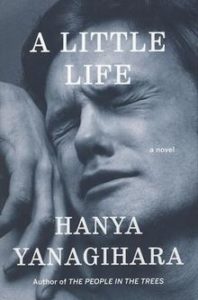
Hanya Yanagihara, A Little Life (2015)
Speaking of books we all had an opinion about—this massive, deeply upsetting novel has die-hard fans and die-hard detractors in spades. More fans, though, I’d wager. “No one expected Hanya Yanagihara’s second novel, A Little Life, to be a best seller—not the author, not her agent and not her editor, who initially balked at its length and some of the disturbing scenes,” wrote Jennifer Maloney in The Wall Street Journal. “Its release in the U.S. in March was quiet, though accompanied by glowing reviews. But in recent months it has gathered momentum, fueled by booksellers and readers, particularly on Twitter, where people have shared their intensely emotional responses.” It soon became a bestseller, first in the UK, where it was longlisted for the Booker Prize, and then in the US.
Garth Greenwell called it a candidate for the elusive Great Gay Novel, “even if no one has quite realized it yet. Hanya Yanagihara’s A Little Life, which was released in March, is one of the most buzzed-about books of the season, hailed as a “tour de force,”“extraordinary,” “elemental and irreducible,” “astonishing,” and the work of “a major American novelist.” But no coverage of the book I’ve seen has discussed it as a novel fundamentally about gay lives—as the most ambitious chronicle of the social and emotional lives of gay men to have emerged for many years.” Greenwell himself, of course, being the author of a Great Gay Novel.
And Brigid Delany sees the novel as a modern classic perfect for readers in the age of anxiety. “Our daily social interactions have blown out from a few dozen to potential thousands, which we carry around with us every moment on our smartphones,” she wrote in The Guardian.
Restless capital means a working life that more closely resembles greyhounds chasing the rabbit than any kind of craftsmanship. There’s no rest, no respite, no commonly held beliefs to bind us together, and there’s a gap between dreams and reality; the big life you wanted is the little life you made.
But if anxiety is our age’s burden, then friendship is its balm.
Friendship is the solace in A Little Life, as it is in any life riven with anxiety, and it is rendered so exquisitely lifelike here—replete with beauty and dark currents—that it almost approximates the real thing.
If my friends made me cry as much as A Little Life did, they would not be my friends, but still, I take her point.
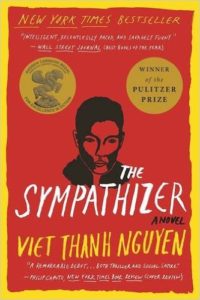
Viet Thanh Nguyen, The Sympathizer (2015)
Nguyen’s debut novel not only won a slew of prizes, including the Pulitzer, but somehow immediately felt necessary: as if it had always been part of the canon but only just now been written. In The New York Times, Philip Caputo highlighted the “distinct perspective” Nguyen—born in Vietnam, raised in the US, brought to the Vietnam war. “His book fills a void in the literature, giving voice to the previously voiceless while it compels the rest of us to look at the events of 40 years ago in a new light.”
But this tragicomic novel reaches beyond its historical context to illuminate more universal themes: the eternal misconceptions and misunderstandings between East and West, and the moral dilemma faced by people forced to choose not between right and wrong, but right and right. The nameless protagonist-narrator, a memorable character despite his anonymity, is an Americanized Vietnamese with a divided heart and mind. Nguyen’s skill in portraying this sort of ambivalent personality compares favorably with masters like Conrad, Greene and le Carré.
Ron Charles, too, called it “surely a new classic of war fiction,” and pointed out the contemporary relevance of some of its passages, but considered it “too great a novel to feel bound to our current soul-searching about the morality of torture. And it’s even more than a thoughtful reflection about our misguided errand in Southeast Asia. Transcending these historical moments, Nguyen plumbs the loneliness of human life, the costs of fraternity and the tragic limits of our sympathy.”
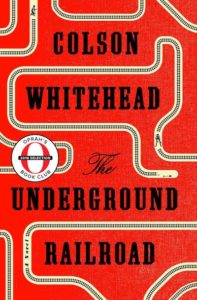
Colson Whitehead, The Underground Railroad (2016)
Here’s another book it seemed like everybody was reading when it came out, not to mention winning every award: the Pulitzer Prize, the National Book Award, the Arthur C. Clarke Award, and the 2017 Andrew Carnegie Medal for Excellence. Oprah also picked it for her book club, and it was longlisted for the Booker. No big deal. And no surprise—the book is, as Michiko Kakutani wrote, “a potent, almost hallucinatory novel that leaves the reader with a devastating understanding of the terrible human costs of slavery.” 2016 was also a year when the legacy of slavery was increasingly in the news and in our cultural attention (it still is), and therefore some of the atrocities of the book, as Kakutani points out, “resonate today: the police killings of unarmed black men and boys, the stop-and-frisk policies that often target minorities, and the anti-immigrant language used by politicians to ramp up prejudice and fear. Mr. Whitehead does not italicize such parallels. He does not need to. The harrowing tale he tells here is the back story to the injustices African-Americans and immigrants continue to suffer, but a back story only in the sense, as Faulkner put it, that “the past is never dead. It’s not even past.”
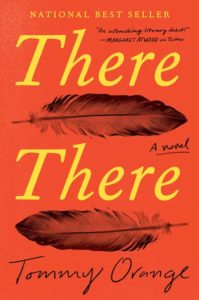
Tommy Orange, There There (2018)
It’s really hard to choose a book from 2018 for this list, but I thought at least one should make the top ten, and for that reason I’ve selected There There, a complex and glorious novel about contemporary Native Americans living in Oakland that EW called “the year’s most galvanizing debut novel.” And they weren’t the only ones.
In a review entitled “Yes, Tommy Orange’s New Novel Really Is That Good,” Colm Tóibín called the novel “an ambitious meditation on identity and its broken alternatives, on myth filtered through the lens of time and poverty and urban life, on tradition all the more pressing because of its fragility, it is as if he seeks to reconfigure Oakland as a locus of desire and dreams, to remake the city in the likeness of his large and fascinating set of characters.”
It’s also a fair reflection of our current times. “The idea of unsettlement and ambiguity, of being caught between two worlds, of living a life that is disfigured by loss and the memory of loss, but also by confusion, distraction and unease, impels some of the characters, and allows the sound of the brain on fire to become dense with dissonance,” Tóibín writes. “Orange’s characters are, however, also nourished by the ordinary possibilities of the present, by common desires and feelings.” To all of which I say: same.
See also:
Jonathan Franzen, Freedom (2010), Patti Smith, Just Kids (2010), Rebecca Skloot, The Immortal Life of Henrietta Lacks (2010), Siddhartha Mukherjee, The Emperor of All Maladies (2010), Sheila Heti, How Should a Person Be? (2010), David Mitchell, The Thousand Autumns of Jacob de Zoet (2010), Tao Lin, Richard Yates (2010), Gary Shteyngart, Super Sad True Love Story (2010), Laura Hillenbrand, Unbroken (2010), Julian Barnes, The Sense of an Ending (2011), Jesmyn Ward, Salvage the Bones (2011), Haruki Murakami, 1Q84 (first English translation, 2011), Ernest Cline, Ready Player one (2011), E. L. James, Fifty Shades of Grey (2011), Ben Lerner, Leaving the Atocha Station (2011), Karen Russell, Swamplandia! (2011), Tom Perrotta, The Leftovers (2011), Maria Semple, Where’d You Go Bernadette? (2012), Cheryl Strayed, Wild (2012), Gillian Flynn, Gone Girl (2012), Kate Atkinson, Life After Life (2013), Chimamanda Ngozi Adichie, Americanah (2013), Rachel Kushner, The Flamethrowers (2013), Donna Tartt, The Goldfinch (2013), Ben Lerner, 10:04 (2014), Rachel Cusk, Outline (2014), Elizabeth Kolbert, The Sixth Extinction (2014), Roxane Gay, Bad Feminist (2014), Helen Macdonald, H is for Hawk (2014), Jenny Offill, Dept. of Speculation (2014), Anthony Doerr, All the Light We Cannot See (2014), Eula Biss, On Immunity (2014), Marlon James, A Brief History of Seven Killings (2014), Ta-Nehisi Coates, Between the World and Me (2015), Lauren Groff, Fates and Furies (2015), N. K. Jemisin, The Fifth Season (2015), Paul Beatty, The Sellout (2015), Maggie Nelson, The Argonauts (2015), Naomi Alderman, The Power (2016), Emma Cline, The Girls (2016), Han Kang, The Vegetarian (first English translation, 2016), Susan Faludi, In the Darkroom (2016), Matthew Desmond, Evicted (2016), Hisham Matar, The Return (2016), Garth Greenwell, What Belongs to You (2016), David Grann, Killers of the Flower Moon (2017), Min Jin Lee, Pachinko (2017), Patricia Lockwood, Priestdaddy (2017), Celeste Ng, Little Fires Everywhere (2017), Carmen Maria Machado, Her Body and Other Parties (2017), Ta-Nehisi Coates, We Were Eight Years in Power (2017), Masha Gessen, The Future is History (2017), Sally Rooney, Conversations With Friends (2017), Ottessa Moshfegh, Homesick for Another World (2017), George Saunders, Lincoln in the Bardo (2017), Jesmyn Ward, Sing, Unburied, Sing (2017), Mohsin Hamid, Exit West (2017), Lisa Halliday, Asymmetry (2018), Michael Wolff, Fire and Fury (2018)